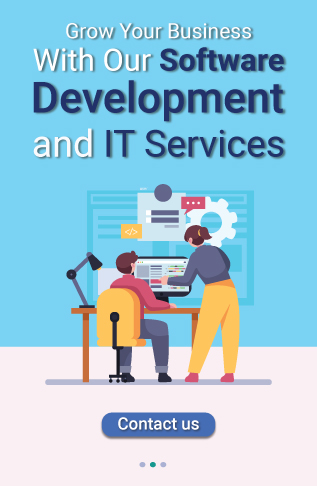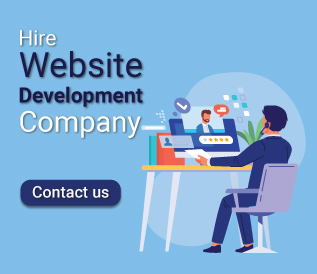Running a B2B SaaS business today is not just about building a great product. It is also about how well you support, engage, and retain your users, often with limited time and rising expectations.
We are in a fast-moving world where customers expect immediate help at every stage. Whether it is a first-time visitor exploring your platform or a long-term customer with a billing issue. They want clear answers right away. And if they do not get what they need? They will quietly move on to a competitor who can respond faster. This is where an AI chatbot has started making a real difference for B2B SaaS businesses.
Now, many SaaS founders are rethinking how they handle user conversations — not just in support but across the entire customer journey.
And these chatbots do not just say – Hello or answer FAQs any more. New AI chatbots are revolutionizing how businesses find and communicate with customers, automate support, qualify leads, and increase conversion rates — all without the human touch.
So now, the question is not if you should adopt an AI chatbot. It’s when.
In this blog, we will explore everything you need to know about using AI chatbots in your SaaS business, including:
- What AI chatbots are
- How they work in a SaaS environment
- Where they bring the most value
- Why more SaaS companies are choosing them
- Future of AI chatbots in SaaS industry
By the end of this guide, you will clearly understand the role of AI chatbots in SaaS and why they have become essential for every growing B2B software company.
Table of Contents
ToggleUnderstanding AI Chatbots
AI chatbots are computer programs that can chat with people just like a real person.
But rather than fixed replies or scripted responses, today’s AI chatbots are smart enough to know what someone is asking, provide meaningful responses and continue learning to improve themselves over time.
AI chatbots can provide the most commonly asked questions, solve basic problems, and even make product recommendations—all in real time and without any human intervention.
These chatbots use technologies like:
- Natural Language Processing to understand how people speak
- Natural Language Understanding to figure out what the user means
- Machine Learning to learn from past conversations and get better over time
In short, a good AI chatbot goes far beyond answering questions. It helps your business run better. Because it is available and can help 24/7, respond in an instant, and complete functions that would use up time otherwise spent by a person on your team.
How Do AI Chatbots Work?
Here is how the AI chatbot works in a B2B SaaS company:
1. Processing the Message: The chatbot software processes the user’s message, figuring out what the user is trying to communicate regardless of sloppy word usage or if they could have done better. The chatbot uses natural language processing. It helps convert human language into computerized instructions.
2. Retrieving the Answer: After the chatbot understands the user’s message. It searches for the best possible answer. The content can come from programmed responses, help articles, or other linked sources.
3. Formulating a Response: With the information gathered, the chatbot will generate a reply that sounds natural and clear. The idea is to provide an answer that will create a natural progression in the conversation.
4. Learning: With machine learning, chatbots become more intelligent every time you use them. A pharmacy chatbot will have also learned from all other pharmacy interactions and the many conversations it had prior to your input, which will make it faster and more accurate.
Role of AI Chatbots in SaaS
AI chatbots are becoming an essential part of how B2B SaaS companies support and engage users at scale.
As products grow more feature-rich and customer bases become more diverse, support teams often find themselves stretched thin. New users may have onboarding questions, trial users might need guidance on features, and existing customers could run into minor issues — all at the same time.
That is where AI chatbots come in. They help by stepping in to handle the routine, everyday conversations. Which takes up time but does not always need a human response. Things like:
- Helping users set up their accounts and start using the product
- Answering questions about how features work
- Explaining pricing, plans, and billing clearly
- Fixing common problems like login issues or where to find something
- Passing complicated questions to the right support team
Instead of users waiting in long queues or digging through help docs, chatbots provide instant, clear answers 24/7.
AI chatbots have evolved from just answering FAQs. In today’s B2B SaaS world, AI chatbots are advanced, always-on assistants that help users at every step of the user journey, from prospecting to onboarding to continued support.
Recent Stats About AI in the SaaS Industry
Here are some recent stats about AI in SaaS:
- The AI chatbot market is growing fast and could reach over $46.64 billion by 2029.
- More than 987 million people are now using chatbots in their businesses.
- 35% of SaaS companies are already using AI, and 42% more plan to use it soon.
- 64% of customers say the best thing about chatbots is getting help any time, day or night.
How Are AI Chatbots Being Used in the B2B SaaS Industry? Top 7 Use Cases

Here is how modern B2B SaaS companies are using AI chatbots to improve support, automate operations, and keep users engaged. Let us explore the top use cases:
1. Automated Customer Support
AI chatbots are like 24/7 support agents that are available for your users and never sleep. The AI chatbots take care of the most common AD-HOC everyday customer questions, such as resetting passwords, walking users through their set-up steps, and describing how a feature works.
Users can now get instant, friendly help right inside the software instead of having to wait in long queues and browse help docs. It also keeps response times quick and consistent across all time zones.
Meanwhile, your human team can focus on solving challenging problems because the chatbot has already taken care of the basics. It is a win for your users and a relief for your support team.
Benefits:
- Available 24/7 to support users in any time zone
- Cuts down support ticket volume and wait times
- Ensures fast, consistent, and accurate responses
- Frees up human agents for complex issues
- Improves user satisfaction and retention without increasing support headcount
- Reduced workload on support agents
- Lower support costs
Examples:
- A user forgets their password, and the chatbot walks them through account recovery instantly.
- During onboarding, someone asks how to set up integrations and the bot shares a clickable step-by-step guide.
- A trial user has a billing question, and the bot explains the pricing tiers and usage limits before offering to connect them with sales.
2. Lead Qualification and Sales Assistance
Not every website visitor is ready to buy, and not every sales team has time to chase every lead. That is where AI chatbots step in.
They initiate conversations with visitors, ask some insightful questions, and determine if someone is a good fit for your product. If they determine that a visitor is a good fit, they can either book a call, recommend the best plan, or pass them to your sales rep.
It feels as if you have an assistant available 24/7 to process and sift your best leads without friction—no forms, no waiting, just valuable conversations in real-time.
Benefits:
- Qualifies leads in real-time.
- Engages visitors instantly without forcing them to fill out forms
- Speeds up the sales cycle by eliminating back-and-forth
- Identifies high-intent leads and routes them to the right team
- It helps focus resources on the leads most likely to convert.
- Creates a smoother buying experience for the prospect
Example:
- A new visitor lands on your pricing page — the chatbot asks what they are looking for and suggests the best plan based on their needs.
- Someone wants to know if your product fits a large team — the bot asks a few quick questions about team size and goals, then offers to schedule a demo.
- A returning user is exploring your features — the chatbot offers to connect them with a sales rep for a quick walkthrough.
3. Onboarding and Personalized User Guidance
In SaaS, first impressions can make or break the product experience. When a user signs up, it can be overwhelming with everything there is.
An intelligent AI chatbot can greet them, ask them what they are trying to do, and support them step by step like a personal tour guide that is with them inside your software. Whether they are setting up their account, connecting tools, or finding must-know features, the chatbot gives just enough help at the right time.
This support makes your users feel valued from day one and allows them to realize their own value from your product quicker and ultimately be retained longer.
Benefits:
- Simplifies onboarding and reduces early drop-off.
- Reduces drop-off rates during the trial or setup phase
- Offers tailored guidance based on each user’s goals or role
- Reduces the need for long tutorials or manuals
- Increases product adoption and user confidence
- Ensures a smooth and supportive first-time experience
- Frees up your support team from basic repetitive tasks
Example:
- A new user signs up, and the chatbot asks what they want to achieve — then guides them through the right features step by step.
- If a user gets stuck during setup — the chatbot shows helpful tips or offers a quick walkthrough to complete the process.
- The bot notices someone has not finished setting up their account — it checks in with a friendly reminder and offers help to complete the setup.
4. Predictive Engagement and Churn Prevention
What if you could stop a user from quitting your software before they even decide to leave? That’s the purpose behind predictive AI chatbots.
These bots will be on the lookout for red flags, such as users passing over important features, making the same error repetitively, or users not logging in for a while. When something does not seem quite right, perhaps due to inaction, the AI chatbot pops up to check in and offer some assistance.
These small nudges can help re-engage users before they completely disengage or lose interest. Over a period of time, this will also help your team to learn about churn. So they can address key points of friction for users across the board.
Benefits:
- Spot early signs of user frustration or disengagement
- Offers timely nudges to prevent churn
- Improves product stickiness by encouraging regular use
- Gathers feedback to improve the user experience
- Improved retention and lifetime value by keeping users active
Example:
- A user has not logged in for a week, and the chatbot checks in with a helpful use case or reminder
- Someone makes an error multiple times, and the bot offers to guide them through the solution.
- A trial user seems inactive, and the bot invites them to book a walkthrough before their trial ends.
5. Process Automation
There’s no point in spending time doing tasks that a chatbot can do in seconds. From booking demos and collecting feedback to updating your CRM, AI chatbots can perform dozens of little tasks in the background without a human being involved.
They are ideal for streamlining non-creative workflows that take time away from your team. Now, instead of struggling with emails, forms, and data entry, your team can concentrate on the important strategic work while the chatbot handles the mundane work. It is essentially hiring an extra assistant without the added overhead.
Benefits:
- Saves time by automating repetitive tasks
- Reduces manual errors and delays
- Keeps operations streamlined and scalable
- Allows your team to focus on more valuable work
- Improves response speed and overall efficiency
- Ensures faster response and follow-up
Example:
- A chatbot books a product demo by checking the calendar and confirming with the lead
- A support bot collects bug details and automatically logs a ticket into your system.
- During onboarding, the bot collects required details and auto-updates the CRM without human input.
6. Billing and Account Management Support
Billing questions do not have to turn into support tickets. With AI chatbots, users can ask things like “What is my current plan?” or “Why did I get this charge?” and get instant, straightforward answers.
The AI chatbot can also help with plan upgrades, renewals, and even updating payment methods—all within the chat window. And if there is something more sensitive, like a refund request, the bot can route it to the right person.
This keeps billing transparent, quick, and less frustrating for everyone involved.
Benefits:
- Handles billing queries instantly without long wait times
- It improves transparency and reduces user frustration
- Automates upgrades, renewals, and plan changes
- Reduces the workload on finance and support teams
- Builds trust by offering clear, helpful answers
Example:
- A user asks about charges, and the chatbot breaks down the invoice by item
- Someone wants to upgrade plans, and the bot compares features and processes the switch.
- A customer needs to update their credit card info, and the bot walks them through it in real time.
7. Real-Time Data Collection and Feedback Insights
Every chat with a user is packed with insights—you need a smart way to capture them. AI chatbots gather valuable feedback during conversations, like what features users struggle with or what questions they ask over and over.
They can even gauge the conversation tone, identifying frustration or satisfaction. They offer your team a real-time look into what works, what doesn’t, and where you should focus your improvement efforts.
It provides a continuous feedback loop, which allows you to build a better product and deliver a better user experience.
Benefits:
- Continuous feedback without extra effort from users
- Real-time insights into customer needs and issues
- Helps improve onboarding, UI, and help resources
- Supports data-driven decisions for product and support teams
- Captures sentiment and trends to guide improvements
Example:
- A chatbot notices many users get stuck on the same feature and flags it to the product team
- After solving a problem, the bot asks, “Did this answer help you?” and records the response for future improvement.
- The chatbot collects feedback during chats and shares a weekly report with common issues and user suggestions.
Why Are B2B SaaS Businesses Choosing AI Chatbots? 6 Reasons
Here are six key reasons why B2B SaaS businesses are using AI chatbots:
1. 24/7 Customer Support
In SaaS, customer questions do not follow office hours. They need help the moment they hit a problem, and if your team is not available, your users get frustrated or drop off. That is where an AI chatbot shines. It can talk to users any time, day or night, answering questions and guiding them through issues without delay.
2. Lower Support Costs
Building a support team takes time, money, and a lot of resources. But most customer queries are routine. AI chatbots help you keep quality high while cutting costs. They handle repetitive tasks like FAQs, password resets, account updates, and plan queries, which often make up 60–70% of total tickets.
3. Higher Customer Engagement
Getting users to explore your product and find value early is critical for retention. AI chatbots drive that engagement from day one — proactively guiding users through features, checking in during trial phases, and answering usage questions in real-time.
4. Useful Customer Insights
Every time someone chats with your bot, you are collecting valuable insights without even trying. You start to see what questions come up the most, which features confuse people, and where they tend to drop off. It is like having a direct line into what your customers are thinking. This kind of real-time feedback helps you improve your product and fine-tune your messaging across teams.
5. Boosted Efficiency and Productivity
When your internal team is not busy with repetitive queries or manual updates, they can focus on real growth. AI agents can handle those routine jobs quickly and accurately. This frees up your support, sales, and success teams to focus on the stuff that drives growth and keeps customers coming back.
6. High Scalability
When your business starts growing fast, the last thing you want is your support system falling behind. AI Chatbots help you scale without stress. They can handle thousands of user conversations at once, respond instantly across channels, and keep your service running smoothly no matter how big your user base gets.
How much does it cost to build a chatbot?
The average cost of custom AI chatbot development for a B2B SaaS business can range between $10,000 and $25,000. However, its actual cost can vary based on several factors, including the type of chatbot, complexity, integration with other tools, maintenance and location of the chatbot development company.
The Future of AI Chatbots in SaaS
AI chatbots are not just the future anymore — they are becoming part of the everyday toolkit for growing SaaS companies. Whether it is helping users get started, answering questions on the spot, nudging leads toward a decision, or bringing back users who have gone quiet, Generative AI bots are proving they can do a lot.
Some of the biggest names in SaaS are already using them to their advantage. Their AI chatbots do not just respond to questions — they keep customers engaged, predict behaviour, and even close sales while the team is off the clock.
And here is the thing: if you have not started thinking about how to use chatbots, chances are your competitors have. The longer you wait, the more ground you are giving up.
AI chatbots are not just for saving time on support any more. They are becoming key players in growth, conversions, and user experience. Want to scale without hiring a massive team? Improve retention? Give users a more personalized journey. That is what chatbots are built for.
Bottom line? In a market where speed and user experience can make or break you, having an AI chatbot in place gives your B2B SaaS a real edge. Not someday, but today with the help of an AI chatbot development services provider.
Planning for integration of a custom AI chatbot in your SaaS Business?
We have a team of AI experts who can offer tailored solutions for your business needs.
Why Choose DreamSoft4U to Build an AI Chatbot?
With over 20 years of industry experience, DreamSoft4U brings deep expertise and a skilled AI team that understands what modern businesses need and delivers custom chatbot development services. They do not offer one-size-fits-all solutions—instead, they build custom AI chatbots tailored to your specific goals. Contact us today.
Conclusion
For most B2B SaaS companies today, AI chatbots have already become the secret weapon behind smoother support and faster growth.
From giving users instant help to guiding them through onboarding, qualifying leads, and collecting feedback, chatbots are quietly transforming how B2B SaaS companies grow and support their customers.
The best part? They work around the clock, scale with your business, and never lose patience — all while saving time and resources for your team.
So, if you are still in doubt, here is the reality: the sooner you start using AI chatbots, the faster you will see the impact on user satisfaction, retention, and revenue. And if you do not? There is a good chance your competitors already are.
Smart B2B SaaS companies are not just building better products; they are creating more innovative customer experiences. Chatbots are a big part of that shift. Now is the time to get ahead by hiring an experienced AI chatbot development company.
FAQs
1. What exactly is an AI chatbot, and what does it do?
It is an intelligent digital assistant that chats with your users, answers questions, and helps them get what they need—all in real-time. It understands what people say and improves with every conversation.
2. How long does it usually take to build a custom chatbot?
That depends on what you need it to do. Simple ones can be built in a few weeks, but more advanced bots with custom features and integrations might take around 1 to 2 months.
3. Can a chatbot help with sales?
Yes, definitely. Chatbots can talk to visitors, answer product questions, suggest the right plan, and even help them book a demo or complete a purchase.
4. What if the bot does not know the answer?
If it is unsure, the bot can hand things over to a real person or offer a helpful reply instead. Over time, it learns from these moments and becomes more useful.
5. Is using a chatbot safe for handling customer data?
As long as it is built the right way, yes. A good chatbot follows strong security practices to protect user data and keep things private.























